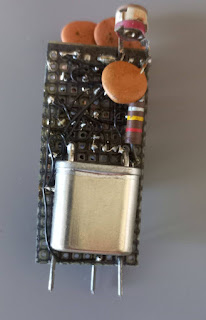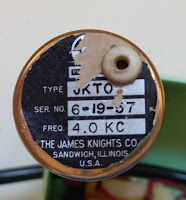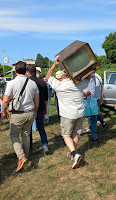I learned about gas filled tuning indicators in the last month, as I started reading through an Italian forum packed with information on restoration of old radio receivers ("Elettroni al tramonto"). They were used before the introduction of magic eyes, so approximately from 1930's to 1940's. It is like a shorter IN-9 or IN-13 tube. On radiomuseum there is some documentation: look for Tune-a-Lite. Of course it ended up in my "to look for" mental list.
I was very lucky as I found one at Friedrichshafen Ham Messe 2022 on the stall of a German seller that deals with vacuum stuff. I tested the component for leaks with my magic wand neon tester, which surprised two more sellers in the same day. Given the presence of neon inside, it came home with me.
On the mentioned forum there are few diagrams showing how to wire the indicator so I tried the setup while swapping the three terminals, since the pinout was unknown. Moreover, since it behaves like a Nixie, as long as the current is limited (to 1 mA) you cannot damage it.
So it did light up. The picture shows a zero, middle and full indication, plus the look from behind the slotted metal window/support.
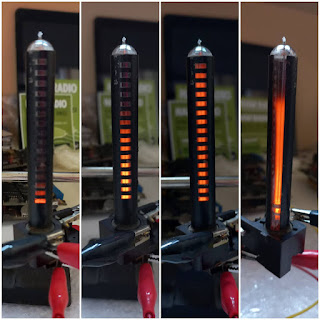 | |||
| Zero, middle, full extension. |
And this is the wiring layout of my specific part. You may use it as a starting point in case you come across a similar indicator mounted on its base:
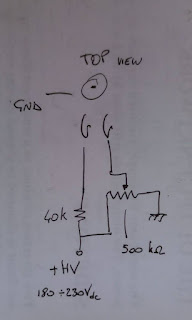 |
| Wiring diagram. |


